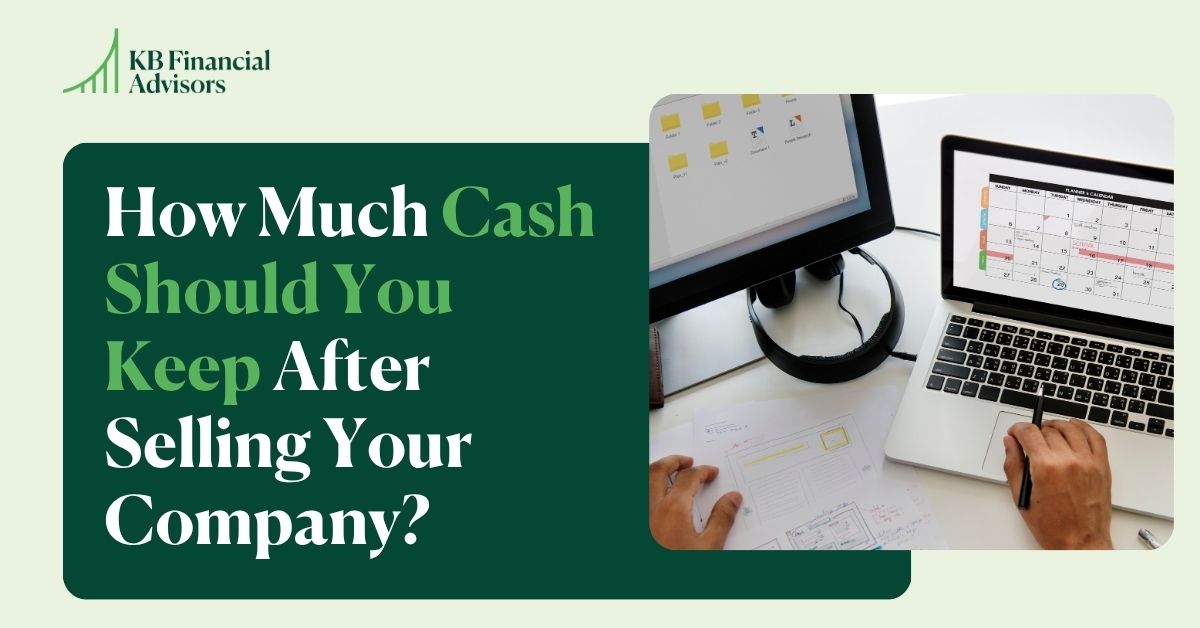Imagine a typical job searcher in Silicon Valley: She took a job at a tech company, and part of her compensation package was ISO (incentive stock options), but she assumed they wouldn’t be worth anything, so she didn’t bother with them. But then, suddenly, the company improved and an IPO was on the horizon. She knew this meant she should do something with her stock options… but things like AMT (alternative minimum tax) sounded scary (because who wants to pay more taxes?!?), so she just let her ISO sit. But now that the IPO’s happened, she’s realized that you pretty much have to do something with her ISO… but she doesn’t have a lump sum of cash to exercise, so she feels stuck. Is an iso cashless exercise a good idea or a terrible mistake?
There are no hard & fast answers to what to do here. But there are two main ways to deal with ISO once the IPO happens, especially if you’ve never exercised any of it before… and especially if you’re like our imaginary friend who doesn’t have the cash she needs to exercise.
After we describe the pros & cons of the main two options, we’ll run the numbers on what it would be like for a Zoom (ticker ZM) employee in this situation, so you can get an idea of what your situation might look like.
(Psst… You’re really gonna want to make sure you scroll down & check that out. ????)
The Two Ways to Handle ISO After an IPO When You Have No Cash to Exercise
The first choice you have is to do an iso cashless exercise of your options, and hold (not sell).
The second choice is to keep waiting, and exercise and sell your options later in a disqualifying disposition.
Option One: ISO Cashless Exercise & Hold
Just because an IPO happens doesn’t necessarily mean you have enough cash to actually exercise your options.
Fortunately, that doesn’t have to hold you back because you can do a cashless exercise.

Essentially, this is where you exercise some of your ISO and then sell your shares so you can get the cash to then exercise and hold the rest… without using any of the cash in your bank account.
Once you exercise the remainder of your ISO after exercising & selling what you need to get the up-front cash, you then hold onto those shares for one year before selling to qualify for lower tax rates. (You’ll just need to make sure you calculate the tax you’ll have to pay on the options you exercise and sell immediately to make the cashless exercise possible.)
On top of exercising without cash in the bank, iso cashless exercise also gives you more career opportunities: If you get a better job offer elsewhere, you’ve already exercised your ISO, have the shares, and are free to leave the company whenever you want without risking the loss of your stock options.
But there are two disadvantages to this approach:
One is that you miss out on any potential price increase on the ISO shares you sell to make the cashless exercise happen.
The second is that the price of the shares you hold could go down before the year is up, taking you beyond your break-even point (the point at which the tax you save is less than your unrealized loss) and putting you in the red. Plus, if you trigger the AMT and hold the shares past December 31, you’ll have to pay the AMT even if the share price drops… which won’t be fun.
Option Two: Keep Waiting – Disqualifying Disposition, Exercise & Sell Later
The other alternative to iso cashless exercise is… you could just keep waiting.
If you don’t exercise anything right now, you get to keep all of your cash, and you don’t have to worry about the AMT.
All you have to do right now is pick a price you’d be happy to sell at, and then wait until the shares reach that price and perform a same-day sale in a disqualifying disposition.
On the bright side, this strategy is really simple: there’s no holding involved, and you don’t have to worry about what happens to the stock price after you exercise.
Plus, it only creates ONE tax event you have to worry about when filing your taxes… whereas if you do an iso cashless exercise and hold, you’ll create multiple tax events. You’ll create an event when you exercise & potentially owe the AMT, and you’ll also create another tax event on your gains when you sell.
You also get the cash in one go instead of having to sit around and wait for it.
The disadvantages, though, involve paying more taxes.
When you exercise and sell immediately, the income generated from that event gets taxed as ordinary income, instead of as long-term capital gains.
Not to mention, it can be hard to pick a price you’d be happy with… and to force yourself to actually stick to it if the company starts doing really, really well. Doing the math on taxes you’ll owe and profit you want to make definitely helps here, but it can be tough.
Career-wise, you’ve also got to keep working for the company.
This isn’t a disadvantage if you love your job… but if you’re looking for the next step of your career development, it’ll have to wait until you exercise your ISO. Of course, you can always leave for a new job without exercising your ISO… it just means you’d be leaving all those unexercised stock options (and potential profits) on the table, which most people aren’t willing to do.
If you decide to take the route of continuing to wait, keep in mind that most ISO grants expire 90 days after you quit your job, which could force you to exercise regardless of the market price if you leave the company.
Now For Some Real World Examples ????
In April 2019, Zoom IPOed at $36 per share.
And despite the 2020 financial crisis and bear market caused by COVID-19, they actually increased their share price. As of writing this post in May 2020, they’re trading at $142 per share, which is a significant increase over the one-year time frame.
So let’s pretend you’re a Zoom employee with 15,000 vested shares, and an exercise price of $3.77. (We’ll also assume you’re a single taxpayer with $250,000 in wages and that you take the standard deduction.)
One thing you’ll notice about the examples below is how complex the decisions can become.
One choice leads to other choices, and it can be hard to do all the math on your own.
(Heck, we’re not even doing the calculations on selling additional shares to cover the exercise and the taxes, we’re just keeping it simple for example’s sake. But if you did decide to sell more shares to cover taxes… there’d be even more tax calculations to figure out. Which is why it’s so important to work with a professional when you’re making your final decisions.)
The Real-World Math of a Zoom Employee’s ISO Cashless Exercise & Hold
Let’s say that at the time of Zoom’s IPO in April 2019 (assuming no trading window or lock-out limits), you did a cashless exercise of your ISO and decided to hold onto the remainder of your shares.
15,000 shares x $3.77 exercise price = $56,550
In order to exercise all your vested ISO, you’d need $56,550.
At the $36 IPO price, you’d make a $32.23 profit per share. ($36 – $3.77 = $32.23)
If you divide $56,550 by the$32.23 profit per share, you’d get 1,755, which means you’d need to sell 1,755 of your shares to cover the cost of your exercise to make it “cashless.”
This would give you 13,245 remaining shares to hold onto.
The only thing is, though, your expenses for your iso cashless exercise aren’t just limited to the cost of buying them.
You also have to think about your ordinary income taxes on the money you “make” from selling those 1,755 shares, as well as the AMT on the 13.245 remaining shares. ????
For your ordinary income tax:
The sale of the 1,755 shares will generate an extra $56,564 of “income” you’ll be taxed on.
Why?
Take 1,755 shares and multiply it by the $32.23 bargain element, and you get $56,564. This alone increases your tax bill by $19,797.
That’s a pretty significant tax increase… but it isn’t the only one you’ll have to pay:
On the 13,245 shares you exercise and hold, you create a deferral item of $426,886. (13,245 shares x $32.23 bargain element = $426,886.)
This triggers a total AMT of $118,095.
In total, that comes to $138,095 in additional taxes you’ll owe. (Over HALF of what you earn in a year!)
To pay for the taxes, you’ve got two choices:
You can sell more of your shares now and set that cash aside for taxes.
OR you can wait to sell the shares to pay the tax bill later on in the year. Doing this can work to your advantage if you exercised during Q1 and you still have time to “hold” for a year before the tax bill is due, qualifying you for long-term capital gains tax rates, which are lower.
The Real World Math of Continuing to Wait & Doing a Disqualifying Disposition (Same-Day Exercise + Sale)
If you decide to skip the ISO cashless exercise and wait… nothing happens, and you owe $0 in extra taxes. You just wait, stay at your current company, and watch the market to see how your stock performs. The only thing you need to do is pick a price you’d be happy to sell at.
So let’s look at Zoom’s stock as an example for this.
In April 2019, Zoom went public at $36 per share.
May 2020, it was trading at $142 per share, which is a huge increase…. Making your exercise & sale ripe for profit. (Or so it seems.)
So let’s compare the two strategies.
If you did an iso cashless exercise like we outlined in the example above, you’d have sold 1,755 shares to cover the cost of exercise, giving you 13,425 shares to sell later for long-term capital gains… and a hefty tax bill of $138,095.
If you sold those 13,245 shares now at $142 each, that would generate a tax bill of $297,355.
So, if you take your total cash from selling 13,245 shares at $142 of $1,880,790 – $138,095 taxes from the initial exercise – the $297,355 tax bill of exercising now = that’s $1,445,340 of net cash that you’re left with.
Not bad, huh?
(That also doesn’t take into account the $32,921 minimum tax credit you’ll be able to use in year three that’ll bring down future taxes and improve your net cash amount.)
But let’s say you wait to exercise and sell once the market price hits something you’re happy with.
When the IPO happened in 2019, you didn’t exercise anything, so you didn’t have any costs.
But in year two, you exercised all 15,000 of your shares at once at a $3.77 exercise price for a total of $56,550 exercise cost.
When you sell, that’s 15,000 x $142 = $2,130,000 total cash.
$2,130,000 total cash – $56,550 exercise cost – $761,561 tax bill = $1,311,889 total cash.
Not bad for a one-day turnaround, huh?
You didn’t have to face as much risk or pay a big tax bill after the IPO happened…. But you did trade in some profitability, since the iso cashless exercise & hold approach generated $133,451 of additional cash, or about 10% more money than waiting & doing a single-day sale.
Endless Potential Scenarios Means You Need to Plan Intelligently
A lot of people without cash to exercise their ISO will just assume that it’s something to put off until later… and that they don’t need to be running any numbers right now.
But that couldn’t be further from the truth.
The example we gave in this blog post is just one potential ISO scenario out of thousands. Your situation may be very different.
Everything is contingent on how your stock performs, and even how it’s doing in relation to the current market forces. (Stock in critical companies like Zoom is going up, but others are going down fast.)
The more the price goes up, the more beneficial it is for you to go ahead and do a cashless exercise and hold. But if the price is going down, it could be a different story.
This is why it’s so important to work with someone who’s intimately familiar with tax rules around AMT and selling shares to make sure you make the best financial move for you. You can click here to get in touch with one of our in-house experts, or click on the button below to schedule a consultation.



